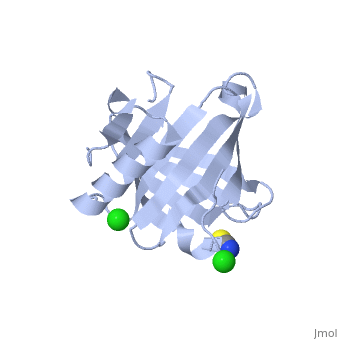Prostaglandin D synthase
From Proteopedia
| |||||||||||
3D structures of prostaglandin D synthase
Updated on 13-September-2023
Hematopoietic PGD2S (Glutathione-dependent) or HGTS1 see Glutathione S-transferase σ
References
- ↑ Urade Y, Hayaishi O. Prostaglandin D synthase: structure and function. Vitam Horm. 2000;58:89-120. PMID:10668396
- ↑ Garza LA, Liu Y, Yang Z, Alagesan B, Lawson JA, Norberg SM, Loy DE, Zhao T, Blatt HB, Stanton DC, Carrasco L, Ahluwalia G, Fischer SM, FitzGerald GA, Cotsarelis G. Prostaglandin D2 inhibits hair growth and is elevated in bald scalp of men with androgenetic alopecia. Sci Transl Med. 2012 Mar 21;4(126):126ra34. doi: 10.1126/scitranslmed.3003122. PMID:22440736 doi:http://dx.doi.org/10.1126/scitranslmed.3003122

